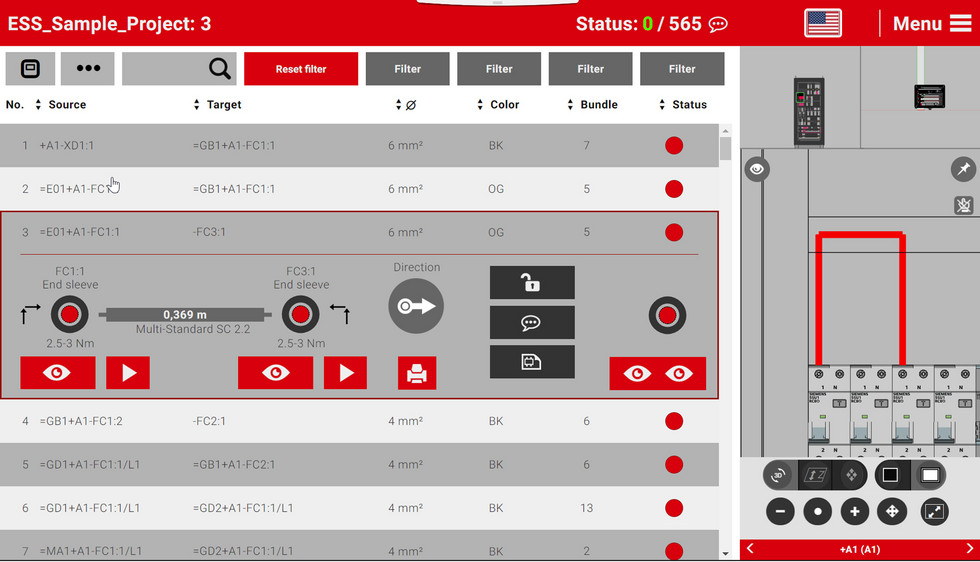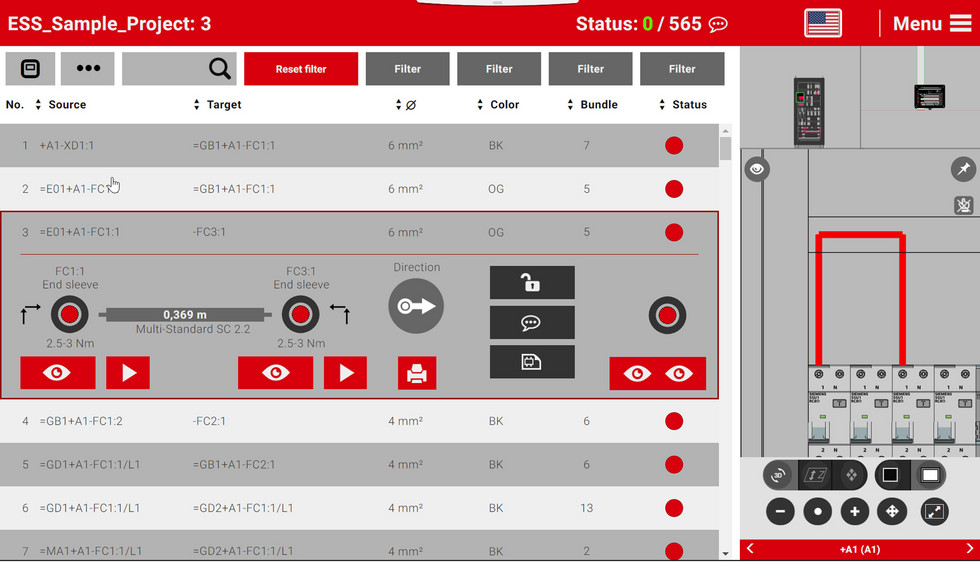Author
 Tony Ward
Tony has been working successfully as a Regional Sales Manager in the UK for the past 16 years. This has involved dealing with companies of all sizes, understanding their situation and business issues in order to offer the right solution to them. Successes of note have been Nissan in the UK and James Fisher Nuclear. Tony has also worked on international accounts such as Coca Cola, being responsible for the sale and roll out of EPLAN across the UK.
ward.t@eplan.co.uk
Tony Ward auf LinkedIn
Tony Ward
Tony has been working successfully as a Regional Sales Manager in the UK for the past 16 years. This has involved dealing with companies of all sizes, understanding their situation and business issues in order to offer the right solution to them. Successes of note have been Nissan in the UK and James Fisher Nuclear. Tony has also worked on international accounts such as Coca Cola, being responsible for the sale and roll out of EPLAN across the UK.
ward.t@eplan.co.uk
Tony Ward auf LinkedIn
A Paperless State of Affairs
The idea of ‘going paperless’ is not new; offices, businesses, hospitals, shops and many other organisations are going digital and leaving paper documentation behind. But for some reason, industry has been slow to jump on the bandwagon. Many companies are now, however, planning to go paperless, but they find the search for new and efficient systems daunting. In this blog, I’ll show you that going paperless doesn’t have to be daunting because there’s a simple and easy solution!
For many factories, creating, exchanging and storing paper documents on the shop floor results in an abundance of work for the manufacturing department. Typically, an order is released and passed on to several employees who issue customer order documents, print routing sheets, write up the process documentation, ensure the proper revisions are included with the job packet and then they finally release the order to the shop floor.
Change Process - Old Methods
During the next stage, the manufacturing department tracks the order and updates the appropriate documents with the time spent on the order and quantities completed on the order. At the final stage, they report to the work scheduling department and tell them the expected completion date. That’s a lot of manual work with a lot of room for errors to creep in. And when a mistake does find its way into the documentation, it escalates through every single area of manufacturing. This means that mistakes are costly, tricky to catch and even trickier to correct. So just what is the solution?
Going paperless and opting for end-to-end digital solutions! It may seem easier to begin with to keep crucial data on pieces of paper – especially when (almost) all the data is correct - however, the data will not be updated in real time, which results in the product or project being delivered with numerous mistakes.
This is an enormous problem that the maintenance engineers, who need rapid access to reliable and up-to-date information so that they can tackle problems quickly and minimise downtime, face far too often! Cloud solutions such as EPLAN eVIEW can solve this problem. EPLAN eVIEW– based on Microsoft Azure - is a service that brings EPLAN projects and data to The Cloud. This data can be used for collaboration and to set the foundation for future cloud-to-cloud connections.
But simply replacing paper files with Word documents or scans of your paper order is not enough. Real-time editing of documents is crucial, as only live, accurate, connected data gives manufacturers the tools they require for deep analysis. Luckily, the best CAE (computer aided engineering) systems can create interactive, paperless work instructions –usually a smart Abode Acrobat (.pdf) document - where you can leave comments to give feedback. Paperless documents can also be accessed on handheld devices like tablets, which is useful if you are on the go and need to access them.
There are also lots of other benefits to digitalisation. Quality and regulatory audits can be done via a digital terminal and via a single system, with revision control and document management visible to all those concerned. These audits can even be done remotely, which can reduce costs for both the manufacturer and the customer.
But going paperless is not just for administrative or maintenance activities; schematic and wiring diagrams also benefit from digitalisation. Many engineers are still using printed schematics to wire a panel. So if something does change within the project, the printed drawing probably won’t be updated to reflect this. Once again, a paperless solution – such as EPLAN Smart Wiring – is the answer, because it allows the manufacturing department to see the most up-to-date drawings on a tablet.

EPLAN Smart Wiring
Having a digitalised system allows the design engineers to make an emergency change or process update instantly. This is done digitally, simply and seamlessly. The proper documentation is generated automatically with the correct recording procedures being enforced – all without the need for chasing legacy documents, which only leads to costly delays.
Projects based on digitally generated data can be sent to end clients for them to comment and provide feedback on via the smart .pdf documents. This approach makes the process of updating and gaining feedback much clearer and quicker. It is also a safer way of exchanging information, as there’s no chance of someone leaving it on the train home or misplacing it around the factory. And, when the project is finished, all of the relevant information can easily be linked into the end user’s SCADA systems and preventative maintenance systems.
Change Process - New Methods
Another important benefit of going paperless in manufacturing environments is the amount of time that staff save, as they no longer have to produce and maintain documents, like standard practice manuals, preventative maintenance manuals, user manuals and work instructions. All of these tasks are now automated and managed centrally, rather that being disbursed across the shop floor.
Ultimately, not relying on physical documentation can lead to greater productivity, lower costs and enhanced quality. Digitalised systems allow employees to spend their time doing what they are good at – designing, testing and manufacturing products – rather than searching though mountains of paperwork.
Finally, paperless systems in factories can shorten delivery timelines. This in turn helps increase customer satisfaction and give manufacturers the competitive edge, in addition to reducing both costs and waste. Can you imagine being able to make changes as and when required without stalling the manufacturing process at all?




Comments